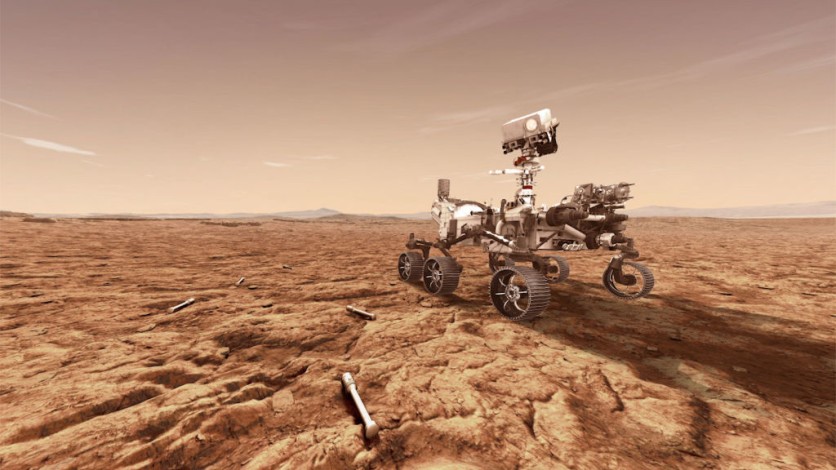Is there life on Mars? This question continues to resonate to this day as astronomers around the world seek answers to this iconic question that even inspired a David Bowie song.
NASA's Perseverance rover is one of the many spacecraft out there that aims to study the geography and everything in between the Red Planet. Recently, the rover completed its first sample depot and it continues to hunt for Martian rocks.
But this day on Feb. 18, Perseverance achieves an important milestone for celebrating its second anniversary of living on the Martian surface.

Nuclear-powered Rover
The six-wheeled, nuclear-powered rover has been exploring Jezero Crater since it arrived there in 2021, studying the Red Planet's geology and gathering samples that are essential to the first phase of the NASA-ESA (European Space Agency) Mars Sample Return campaign.
Scientists want to test Martian samples with cutting-edge lab equipment on Earth in order to look for signs of ancient microbial life and to better comprehend the processes that formed the surface of Mars.
"Perseverance has inspected and performed data collection on hundreds of intriguing geologic features, collected 15 rock cores, and created the first sample depot on another world. With the start of the next science campaign, known as 'Upper Fan,' on Feb. 15, we expect to be adding to that tally very soon," Perseverance project scientist Ken Farley of Caltech said in a press release statement.
Perseverance has gathered two regolith samples, one-atmosphere sample, and three "witness" tubes, in addition to the rock cores.
Read Also : Liquid Water on Mars? Scientists Reveal New Study Which May Prove This Claim About the Red Planet
Perseverance in Numbers
A Mars rover mission depends heavily on numbers, not merely because the team is made up of a large number of scientists and engineers, but also because statistics offer the clearest and most accurate picture of vehicle patterns and performance.
For example, the mission can inform that as of February 14, the rover's left front wheel had completed 9,423 rotations in addition to the fact that it had traveled 9.3 miles (14.97 kilometers).
The MOXIE technological demonstration has generated 3.25 ounces (92.11 grams) of oxygen to date. MOXIE is an acronym for Mars Oxygen In-Situ Resource Utilization Experiment.
The robotic arm's tiny gas-puffing tool, the Gas Dust Removal Tool (gDRT), has also puffed 62 times to remove leftover dust and debris during rock-abrading operations.
The rover's SuperCam science instrument, on the other hand, has fired 230,554 laser shots. Its microphone has also taken 662 audio recordings on Mars.
Related Article : NASA's Perseverance Mars Rover Captures the Most Detailed Image of the Martian Surface with 2.5 Billion Pixels

![Apple Watch Series 10 [GPS 42mm]](https://d.techtimes.com/en/full/453899/apple-watch-series-10-gps-42mm.jpg?w=184&h=103&f=9fb3c2ea2db928c663d1d2eadbcb3e52)



